‘A Night at the Opera’ with the Leica Monochrom & M2
By John Tuckey
Hi all, here’s another few film shots for you from my last shoot. We have Ilford HP5+ shot on an awesome old Leica M2 body with the Lux 50 ASPH attached and a couple of Contax 645 Medium format shots on PanF. I developed this lot myself so I think the PanF fans will be a little happier with how the PanF looks here 😉
As usual the ‘real’ shoot for me was digitally shot on the M-Monochrom while the film was shot for fun and side projects. This time I’ve also included a few of the M-Monochrom shots that were taken as I think there’s an interesting contrast between the ISO 400 film and the digital shots also at ISO 400. To me, it’s not a question of better or worse, but as you’d expect they are very different.
For those interested, more from this shoot at: http://500px.com/jrtbloke/sets/carla_march_set
Attachment Captions and suggested running order:
M2 & Summilux 50mm ASPH @ f/1.4, 1/60, ISO 400 (Ilford HP5+)
–
M-Monochrom & Noctilux @ f/1, 1/125, ISO 400
–
M2 & Summilux 50mm ASPH @ f/1.4, 1/60, ISO 400 (Ilford HP5+)
–
M-Monochrom & Noctilux @ f/1, 1/125, ISO 400
–
M2 & Summilux 50mm ASPH @ f/1.4, 1/60, ISO 400 (Ilford HP5+)
–
M-Monochrom & Noctilux @ f/1, 1/125, ISO 400
–
M2 & Summilux 50mm ASPH @ f/1.4, 1/60, ISO 400 (Ilford HP5+)
–
M-Monochrom & Noctilux @ f/1, 1/125, ISO 400
–
Contax 645 and 80mm f2, f/2, 1/3000, ISO 50 (ilford PanF+)
–
M-Monochrom & Noctilux @ f/1, 1/4000, ISO 400 (and ND grad)
All images post processed in Lightroom, but all in line with my 10 minute promise… which is for the health of my eyes! I just promise myself to never spend more than 10 minutes on an image in post. My reasoning is that if its crap after 10 it’ll always be crap (crap in, crap out) so then I just chalk it up to go and take another.
All the best
John Tuckey

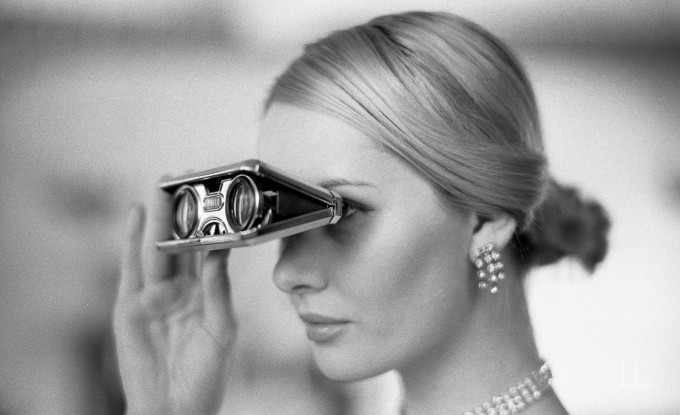
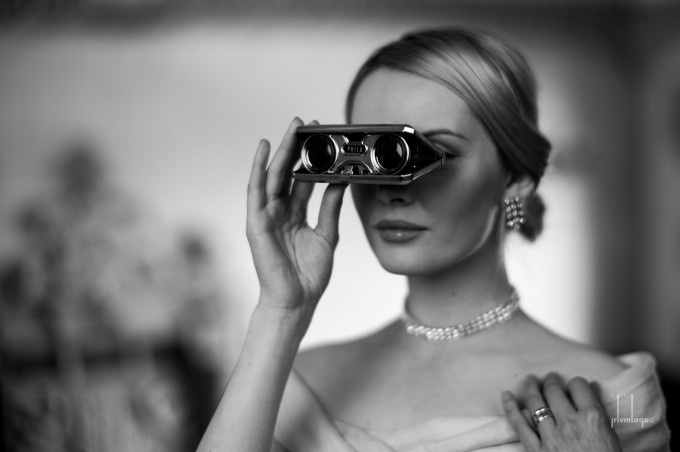
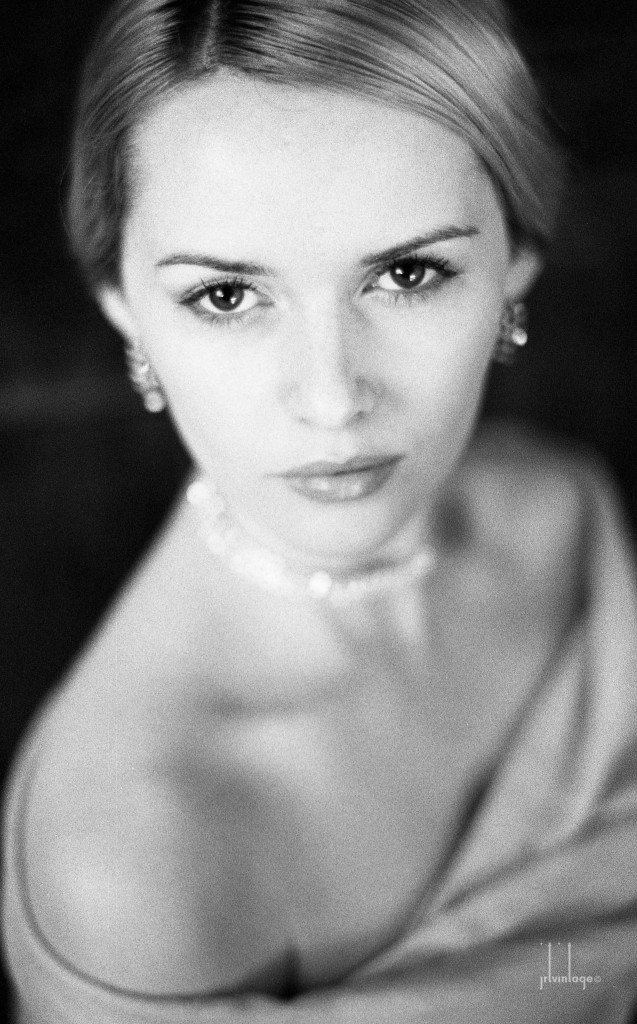
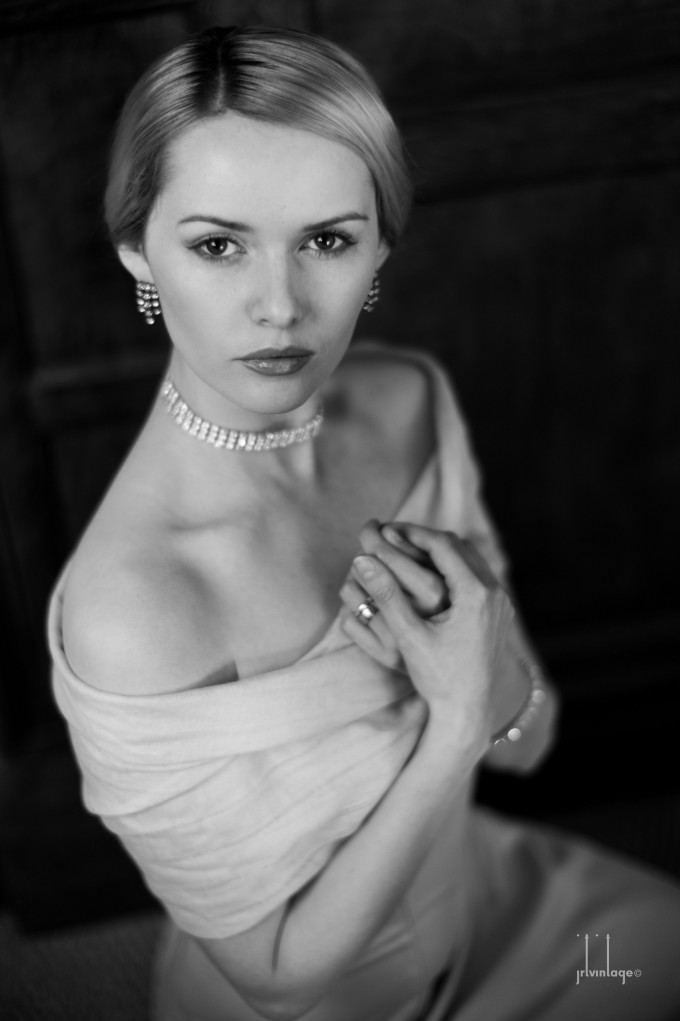
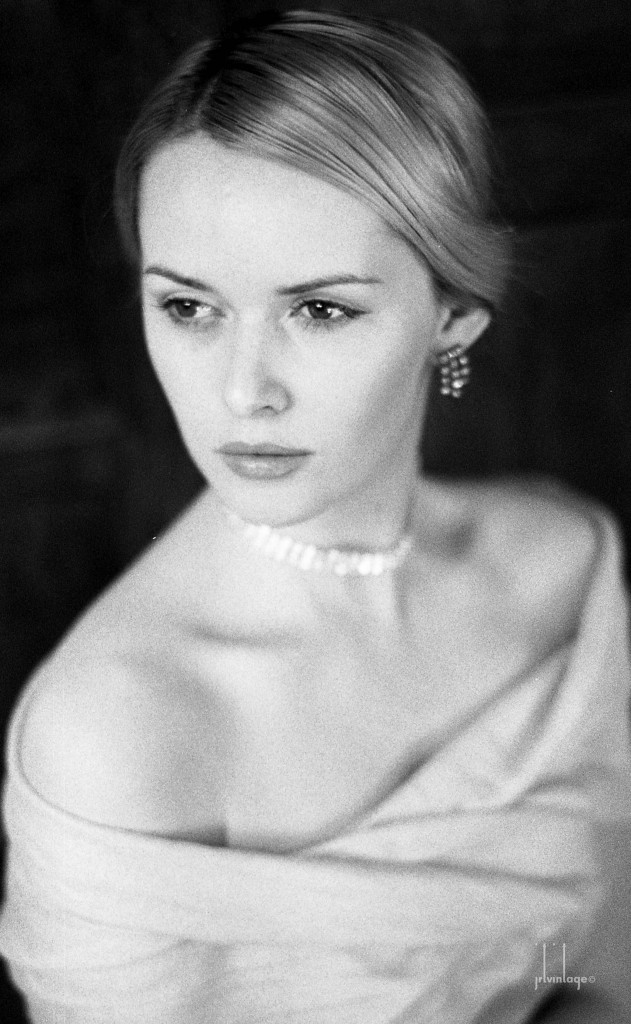
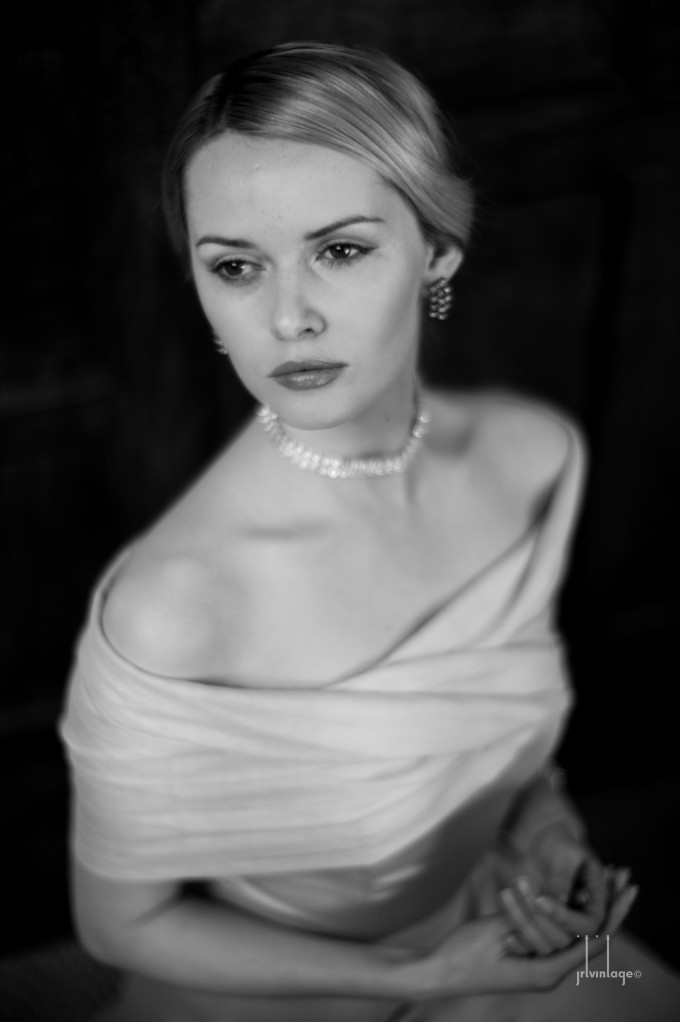
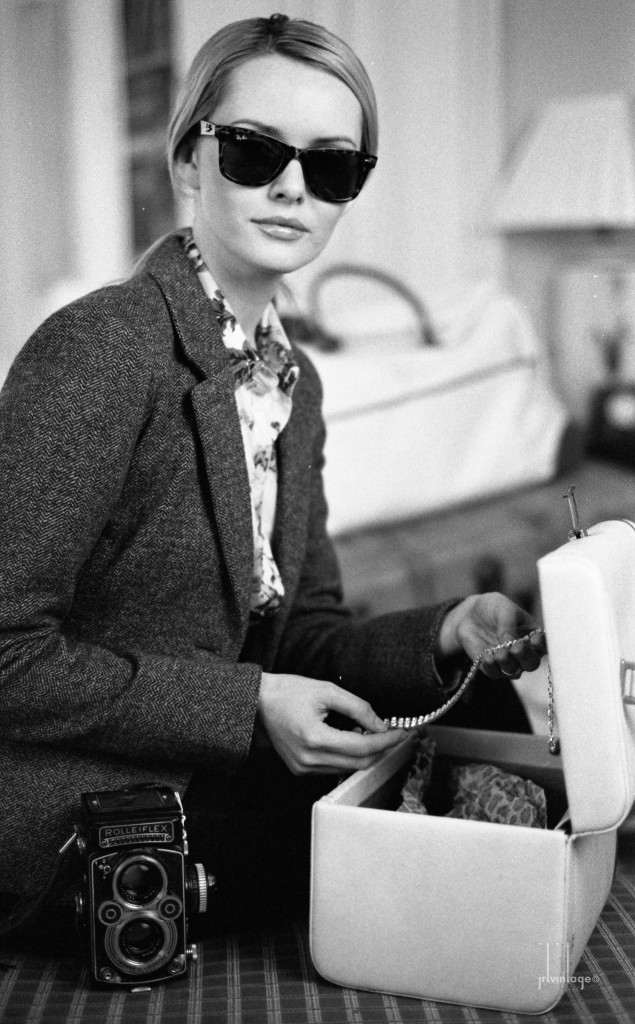
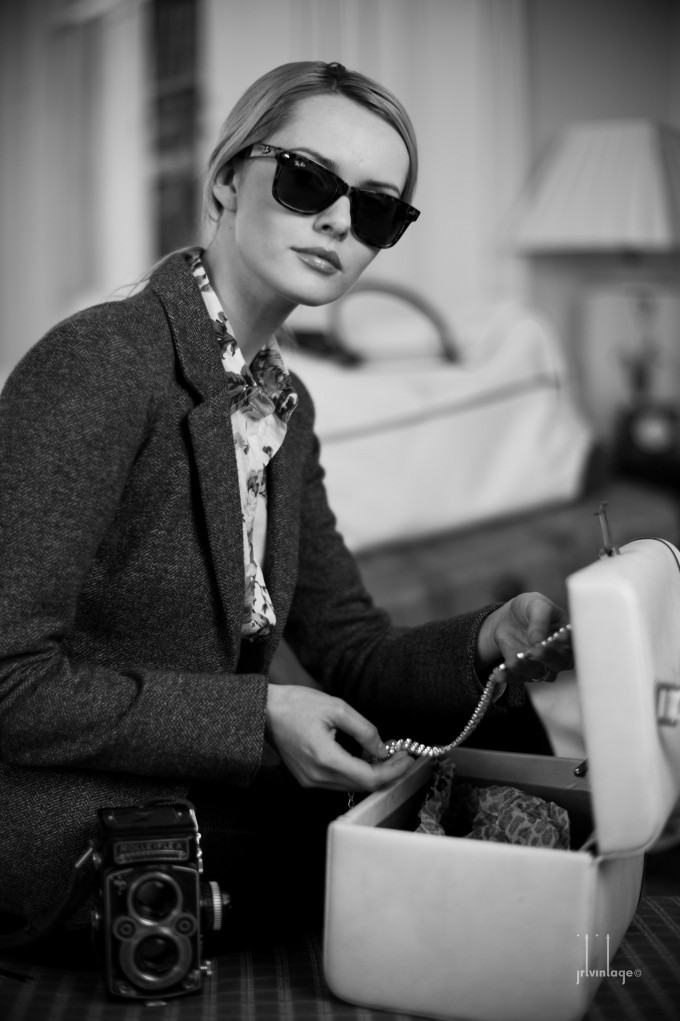
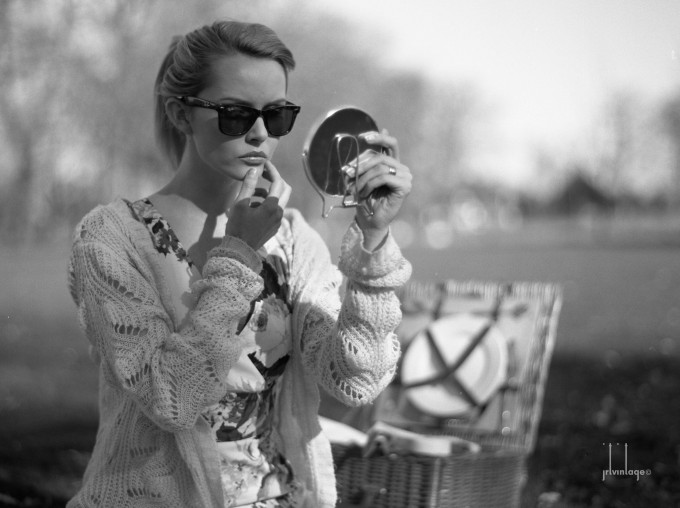
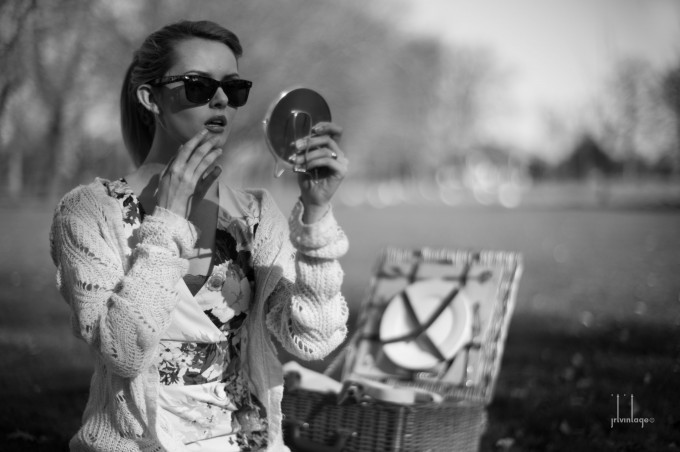


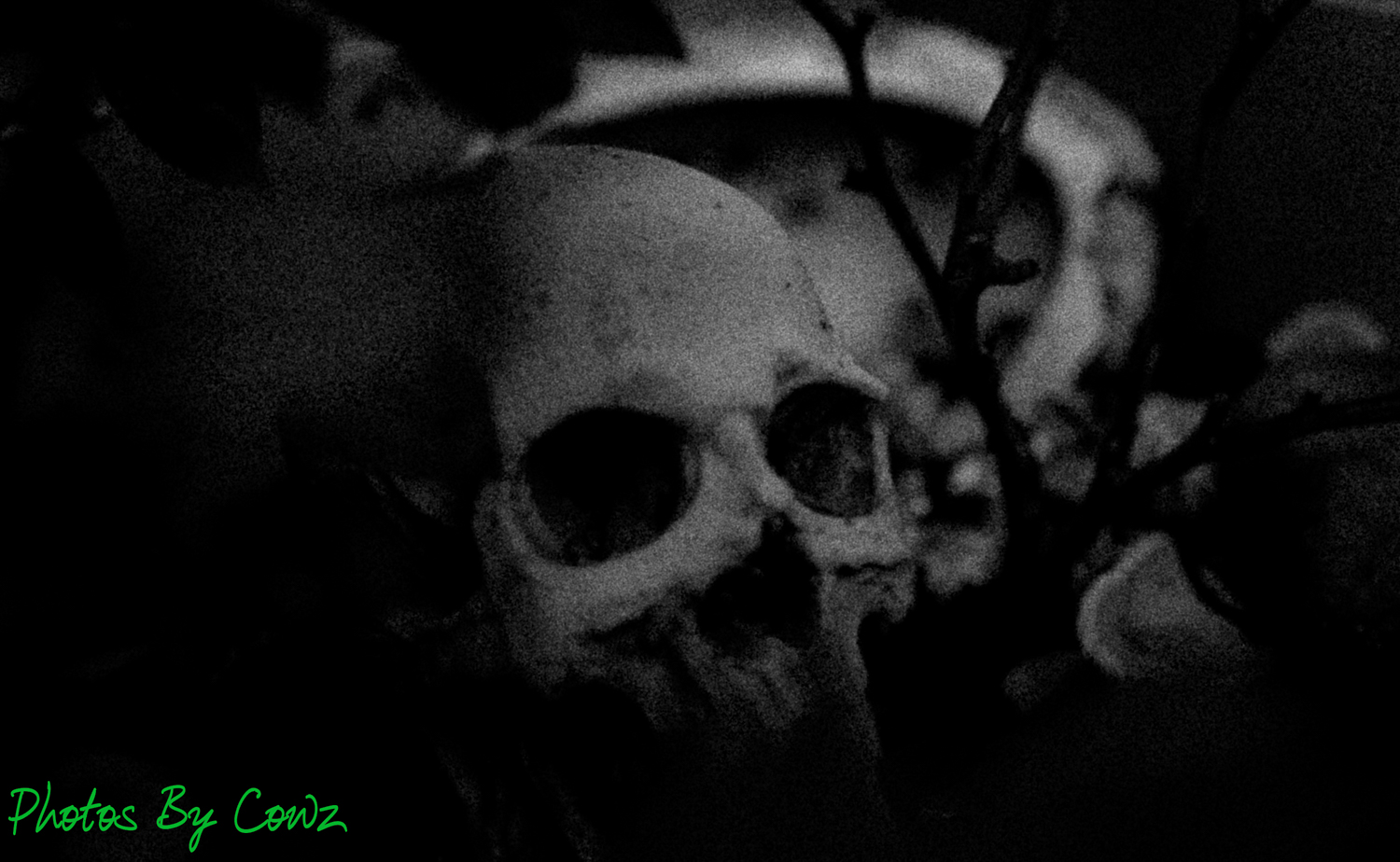
The heck with the cameras, love your model!
$8,000 camera body + the $8,000 Noct (used) vs. the $800 camera body (used) + the $4,000 Summilux?
For me, it’s “film for the win” – by a landslide.
Just my take. 🙂
Just saw you put up your stuff up in the I-shot-it competition. Darn.. more competition from the blog.. 🙂 haha Goodluck!
Cheers Ashlin, good luck to you too!
really great shots. i would like big prints! But who is the model? holy cow!
Hi Patrick, this is Carla Monaco, http://www.carlamonaco.co.uk/
My take on this is very simple. The object in the photo is a beautiful woman. The photos therefore should either highlight her beauty or at the minimum maintain it. In my opinion, the film shots highlight her beauty. The shots taken with Monochrome do not. Her face looks a bit more pasty and fake on Monochrome. It is clear that her face is more natural looking in the film shots. It’s what my eyes see. Could be blind of course.
The film has a texture that is pleasing in a way that one may appreciate a fine conte or pencil drawing.
Mostly prefer the Monochrom
I like the M2 shots more than the monochrome ones. Surprise. Both great images though.
The 645 shots are wonderful. Not a surprise. Love the 645D also but the 645 is such a great camera.
Thanks. Very informative. Really appreciate the effort that went into this. The 1/3000th of a second for PanF for the Contax 645 must be a typo, right?
As for me, I find it easier to nail manual focus with a rangefinder than an slr.
@Martin Fritter, Hi martin, no typo it was a very bright day, so even with the low ISO 50 film the shutter was pushed up to 3k to keep the f stop down at 2. to shoot the same shot on the mono it was a stop faster shutter again and 3 stops of ND grad.
I like the photos and although not correctly staged I find them very elegant and stylish…but,
The post processing of the Monochrom images does not make them any good. And it is very easy. With just some clicks in the LR and the correct HP5+ simulation in Exposure 5 they become 85% identical with the film photos. With a little more fine tuning I am sure that on print just a few could say what is what.
Really John, why did you choose such a pp for the Monochrom images and a relatively “high key” development and scanning for the film photos? It is obvious that the Monochrom images are aesthetically inferior to those taken on film. But this was a post processing thing just four clicks away.
Last but not least I have to say that you have a very interesting portfolio and I recommend to the fellows in this sight to visit your work following the links indicated in this article.
Nice job, very nice.
Regards,
Dimitris V. Georgopoulos
Photographer at Large
Athens, Greece
Thank you Dimitris, but it was never my intent to try and make them look the same. I like the two media because they are so different. The MM files are just as I like them with minor tweaks to contrast and the curve. Just as little has been done to the film, just exposure reduction and contrast tweaking.
As with HP5+ or any other “high” ISO BW film you will always have some distracting dots and dust besides the time absorbing scanning procedure. 10 min rule for film is a wish that will never work out. Some call this “character” for me it’s way too time absorbing. So thanks for the effort.
I would have liked a direct comparison with MM+50 LUX to M2+50 LUX though because the NOCT is a more specialised lens than the MM is to the other cameras used here or any other camera IMO for that matter. It’s an excellent tool not a toy.
I find this Film vs Digital thing annoying. The Film images I think only look better in regards tonality because the MM images haven’t been processed as well and are too ‘grey’ .
The Pan F shots haven’t been processed correctly neither – too grainy. I have shot Pan F and its clinical, smooth and grain is only seen where some dodge and burn has taken place.
The shots taken with my Yashica 230 AF on the other post are inferior as photo’s but have far less grain than these Pan F shots and those are 35mm Rollei Retro 80s developed in Rodinal which isn’t a fine grain developer.
There is room for both. Nevertheless, when you post photos taken with digital and film besides each other t will naturally go in the direction of film vs digital. I don’t see it as a zero sum game. Both are great. Hasn’t dogmatic nonsense caused this world so much pain? Do we really need to be dogmatic about film and digital also? I vote for free and promiscuous love for both mediums. 🙂
These are great. I shoot both digital (M9) and film (MP) and have to say I like both sets of images for different reasons. But to me, image one and three really stand out. Number three in particular. I couldn’t care less whether the digital image is more ‘perfect’ clinically – number three is simply dreamy and perfect. A truly wonderful portrait. Printed 8X10 or so, matted, thin black frame, it would wipe the floor with a lot of other work…..this image is all class and beauty. I disagree, wholeheartedly, that it suggests anything of the reasons why film is dead in comparison to the MM. Stop pixel peeping and analyzing things that are not photographically relevant and look at the composition, overall tone, and how everything in number three just comes together perfectly.
Sublime photos John, loved them all. You did a great job of matching camera to scene as well, because the M2 film really worked well on the images you shot with it – and same with the MM and Contact 645. Inspiring!
I said in a post above I liked the images. I like both the rendering of the Monochrom Leica and the film cameras -however the images are more grainey than I normally go for -as I said above my favourite film is XP2 which produces almost grainless images -but retains the film look. There is a tendency for film users today to exaggerate the grain in film images to better distinguish them from digital. I would like to say especially to people trying film for the first time that film can achieve all kinds of end results -high low contrast -smooth and grainey-beautiful tones – super sharpness -so pick what you want and give it a try.
Best Wishes
I think Rollei Retro 80s is a very good smooth fine film.
Ibraar, I heard that the rollei stock is actually the old AGFA stock/fomulas, do you know if that’s true?
John yes man, same stock, some on different bases.
Try Rollei Retro 80s or Rollei Pan 25 on your Contax 645 for some ultra high resolution fine grain and detail which whatever Falconer may say blows anything this side of MF Digital away.
Or Superpan 200 or Retro 400 for faster speed but very fine grain.
cheers Ibraar thats sweet, some of the first film i shot was expired AGFA 🙂 i’ll look it up for sure!
and although i tend to shoot 35mm film for grain, raw contrast and ‘soul’ and love it for its flaws as a contrast to digi, MF is just a different league. Even portra 400 scanned right blows digi out of the ring.
Agfa APX 400 is Rollei-ised too, and check out Adox Film – beautiful emulsions, utterly! What do you develop in?
Hi Ibraar
I use Ilfosol DDX (1+4) so far, but I have some Kodak T-MAX and some Perceptol to try when that runs out.
I know this for sure…… Theres a certain Je ne sais quoi about the film images.
Also i think its amazing how much the lux asph looks like the nocti in its rendering!!!
Je sais que cela sûrement….il existe une certaine “I do not know what” sur les images de film.
Wow the film does look better – analogue forever! I wish I had the skills to use film well.
Very nicely done John, even being an old film photographer I still prefer the M-Monochrom & Noctilux @ f/1, 1/125, ISO 400 … thanks, great post.
Does anyone else here feel that in shot number two it looks like someone else’s hand is reaching up to pull her dress down? It looks just a little unnatural. I’d have loved to see a little less background blur and a little more depth of field too as with this much it lifts the subject out of context. She could be in a grocery store with those opera glasses for all we know. 😉
Beautiful images… The MM ones remind me of MF or LF Polaroids. As for the Contax 645 & 80, whilst I have not used that (I have used the blad and 110f2 and H1) and fully understand why that is a favourite of many photographers. The look film is very different to digital especially when the image is high key.
The comparisons we tend to do involve scanning a film to make an on screen digital image which is compared with a digitally produced version. It would be interesting to see an exhibition with 36 inch prints comparing a film print and one where a digital negative is made and printed in the darkroom. Maybe a Contax 645 comparison – film and digital?
she’d look good with any camera. another example of expensive-gear-masturbation. just those RB sunglasses look ridiculous. buy an iphone and u get the same results
I don’t mind and it’s an interesting comparision. It might be worth running the MM file through silver efex to get more grain, but I’m not sure what it would prove. At the end of the day as we have both said they are very different media – and as others have said one is smooth and clinical, the other is raw but has more soul.
darn, this was meant to be a reply to Peter Klein above – thank you wordpress 😀
Thanks, John, I saw your reply. I think we’re both saying and seeing much the same thing. One thing this exercise confirms for me: While one can try to emulate one medium with another, it may be much more fruitful to look for the beauty inherent in each medium and do one’s best to bring that out.
10 minutes rule is crap only crap ! … not for the 10 minutes but for the rule
I am really struck by my very strong preference for the M2 images. In fact, as good as they are I find the Monochrom images sterile and lifeless. Perfection without character. I’m thinking a trip through a good film emulation program like DxO’s film pack would save them. This is great news for me as I couldn’t possibly afford a Monochrom but now I no longer feel bad about that.
Great images and great model!
I much prefer the tonality of the film shots, but I do NOT like the ISO 400 grain with her skin. It does her an injustice. The MM captures her flawless skin beautifully. The ISO 50 film looks pretty good. The film shots also look more exposed than the MM. Either way, I like the film tones a bit better.
The 7th and 8th photos (with the suitcase and Rollei) are truly excellent! But one thing that bugs me is the “Ray-Ban” logo on her sunglasses. Older sunglasses never had logos on the lenses and they looked so much classier than today’s tacky sunglasses. It normally wouldn’t be a big deal, but everything else about these photos is so vintage and classy!
Great comparisons – thanks for posting!
The film shot captures so much more detail and texture on the jacket. I can actually make out the threads. When I see how well film holds up it affirms what I believe in my heart. Digital may give a photo greater technical excellence but film has soul. I love the choices film provides me. It’s what keeps it interesting. Keeps you learning. Feeds the passion… When film goes I will melt away. 🙂 I love this site on Friday!
a camera rendering of life will never make it true to life. A painting comes closer to that since there is emotion on the part of the painter involved. A camera is too clinical compared to a painting. A film camera compared to a digital camera’s rendering of external life has more emotion because the film gets in the way similar to how in a painting, the paint gets in the way. The film images look better. Digital in the final analysis will be a divergent trip away from capturing external reality via an instrument outside of a paintbrush or simple pen or pencil on paper. Digital photography is not photography at all but a computer rendering bits on a plane after they have been analyzed by the program. In film the ‘bits’ are the silver reacting to light. In the dark room the ‘negative’ (file) is printed by the operator where no two are alike. Look at Ansel Adams renderings on film of the great spaces in nature and tell me you can not help but fall into the picture as if nature is black and white. These Leicas’ are beautiful and beautifully made but no match for the grand pictures of the human race. Street scenes end up showing the ugly side of the human condition and not the beautiful, generally that is. There are always exceptions. Digital has made photography too easy for those who know nothing about photography and its roots. So put that in the pipe and smoke it.
Well put
“Digital photography is not photography at all but a computer rendering bits on a plane after they have been analyzed by the program.”
Now that’s elitist. Just because you hate digital photography doesn’t make it “not photography”. This is the type of foolish comment you’ll hear on APUG or Flickr’s ‘I Hate Digital’ group.
Nice. I like both. And I must say, finally a model shoot that isn’t cheesy or tacky!
Both the M2 and MM shots are lovely. At first glance (whatever that’s worth) the film shots look a little more organic, maybe? The MM shots look darker. A curve in Photoshop might well equalise the tonal balance. I also shoot with a Monochrom and an M6 and an M7. These pics are so nice I think I will give film a blast this weekend. A very interesting contribution. Thank you. Incidentally I’m not sure that digital grain will ever properly replicate film grain, although that is not to mean I don’t like it. Merely the observation that its different. I always like some grain, it gives texture.
To paraphrase bhvleica above: Beautiful photos of a beautiful woman. Well done.
Kind regards and please keep the contributions coming.
Beautiful photos of a beautiful woman. Well done.
Nice work and I like them all.
The film digital rendering preferences is in my opinion what we grow up with seeing.
Almost like the M9 vs the M240 debate on rendering.
I know it took me some time to start to appreciate the rendering on the M240 as I loved the M9 so much however with time I love both.
John, I like them all, great shots. The Contax and the M2 are of course just film holders; the lens and the film and the lighting do it. I agree with Anthony; what exactly is the point of an MM?
Michiel953, big reply to anthony above 😉
John, looking at what you do with film, I’d sell that MM sharpish. It doesn’t come closenin quality of the images. You don’t need it.
In looking at these photos yet again I find that I like the film much more. There is a synthetic quality to the digital shots which doesn’t appeal to me.
Anyhow all the photos are fantastic, it does not import the camera, the important is the photographer
Really, really fantástico shots.
I die to have a Leica Monocrom but sincerely I like more the photos of the M2
Monohrom images look more “dreamy” because of the Noctilux, I like them more
I am favoring the film images here. I love what the Monochrome offers but here the film feels nicer.
Nice images.
Nice images… dont forget fellow film users that you can use Ilford XP2 Super and have your images scanned using digital ice to remove spots and blemishes. It produces nice images which have a nice smooth feel and excellent grey tones etc.
Some purists are not crazy about it? -I would suggest it to anybody who wants to try out film without too much hassle.
Like the images here John -keep shooting and posting !
Best Wishes
Hi John
Nice article.
It’s a matter of tast i Guess if you like the film or the monochrome. For me both look nice and have their own
signature.
I think the Leica Monochrome is the only M which makes sense and bring something at the table which you can’t get elsewhere.
Very nice and interesting post ! Quiet normal that the Monochrom performs much “cleaner” at ISO 400. Adding grain in post-process could/would make a difference for sure ( still not the “real thing” but nevertheless …) OR one should shoot the Monochrom at ISO 3200 !
I notice that dof of the Noctilux @ f1 is not as shallow as the Summilux @ f1.4 !?
I’m surprised about the simularity between the Contax and the Monochrom ! Nice !
All of the films shots look way better than the digital ones. I just dont see why you would want to spend so much on the monochrom. The digital images look false. Unreal.
They are lovely images John, it was a pleasure to model for you. I love the feel to these images and I think the film ones are my favourite 🙂 https://www.facebook.com/clubcarlamonaco
Always a pleasure Carla, look forwards to shooting with you again in the summer 🙂
It’s the imperfection of film that gives it more character and makes it also more compelling at times. I shoot both. I think film has a place. Hope it lasts my lifetime.
you said it, I love both too and I hope to be able to shoot both as long as I’m shooting – IMHO, i think theres enough enthusiasts and students dabbling in film to keep key film stocks going for a while yet
John: Just for fun, I worked up a side-by-side of the MM (left) vs. film (right), where I equalized the exposures and displayed the faces as they might show on a large print. I hope you don’t mind.
http://gallery.leica-users.org/v/pklein/temp/Huff032114MMvsFilm.JPG.html
(click the little double square icon centered above the picture to see it full size).
They are very different, even after doing some curve adjustments to make the tonalities more similar, and quite a bit of burning in of the MM picture to emulate some of the slight shadows on the forehead in the film version. The rendition of the lips and hair color are different. Highlight renderings are completely different.
And (obviously) the film picture is made of just-visible grains that of random size and placement. The MM picture is made of a grid of pixels that are exactly the same size and too small to see. Tones on the film are made up of different proportions of black grains and clear film. Tones on the MM are made up of many pixels that are similar in tone. This latter point, I think is the key.
The MM and film are drastically different media. Both are beautiful in their own way. Take your pick. In these pictures, I prefer the film rendering. With a different subject, or at a higher ISO, I might very well prefer the digital.
Her lips are looking less inflated this time–much better, imo. Great pix, by the way. 😉
the lovely Vic is back in April Doug, get ready to deal with it! and thanks, by the way 😉
film rock!
Being a digital shooter I have to admit that the film version look better.
Then get yourself a $50 OM-1 camera and $40 50mm 1.8 lens and shoot away. :-). You will be welcomed with open arms.
Nice tones in 2 and 6, and nice catch lights in her eyes.
I meant 3 and 7 (not 2 and 6) though all a nice series. Cheers
Really nice set!
I would love to see some pp on the monochrome files, adding some grain and pull back the contrast and crush the blacks a little. How far from each other would they be after doing that?
/gus
Thanks for posting the comparison. For the first time I am able to really see the difference in artistic expression between film and digital: film transcends emotions so raw that it is captivating, yet digital is so real that one can almost touch it and feel it.
BTW I never realise that the Contax 645 80mm lens is so painterly.
Great work, keep it up.
Cheers.
Excellent work! I enjoyed both image sets very much. Then I called my wife on the screen. She is not a photographer but she likes the look of a great B&W print… and she said the film shots are better in her opinion. I tend to agree.
I prefer the film images… by far. Excellent post.
Peter.
These are beautiful shots John. But I much prefer the film images. They have an ethereal quality to them.
Best regards
Huss
An unfair equation. The first and second files are completely different in angle and exposure. And at F1.4,, judging on the web? Come on – apples and oranges! I love B/W but love having the choice of color even more. I will shoot with my M9 until the shutter explodes. Then I will think of a used ME while it gets repaired. Cheers
You’ve convinced me Martin. John, I take it back. I much prefer your digital shots. The film ones do not have any ethereal quality at all.
😉
Huss
lolol
Great post. It’s very interesting to see the same image shot on film and the Monochrom. If you’re a Monochrom fan you’ll say that it produces a much smoother, ‘cleaner’ image which is obviously better. If you’re a film fan, you’ll say the Monochrom is clinical and characterless while film is more real. So nobody is right – it’s all subjective. So can we officially declare that the film vs digital war is over? Hmmm…probably not….
I don’t think that war will be over by xmas, as I shoot both and love both I guess i’m ‘Swiss’ on this one 😉
I’m waiting for the day when my children ask “What did you do in the analog-digital war, Daddy?”
Nice. However it really begs the question why anyone would purchase an $8k digital camera that only shoots B&W. I don’t see anything compelling with the Leica monochrome that would justify the purchase for me. Just my personal opinion. I know I might be flamed for it :-). I’ll take a D4. Far more versatile.
I’m not going to flame you, there are always others who live to do that. I’m going to do worse, I’m going to write an essay at you ;-P
For what i use the mono for (B&W portfolio and gallery prints) quality counts. So $6500 for a ‘versatile’ D4s at 16mp compared to $5800 (what i paid for my mono) which delivers a real equivalent to medium format 36mp, not a straight 16mp is a no brainer for me.
The D4 (well, my best mates model at least) simply can’t deliver the same file quality and its colour capacity or zoom lens versatility are of no use to me whatsoever. You see I have colour that I don’t use on my old M9 and i’ve never given a fig about zooms….. I’d think for many others you might be right, but if you look through my work you’ll see that its 99.99% B&W, and i only ever use primes so the mono is pretty much made to measure as a specialist tool for me whereas for the sake of that $700 difference, the D4 is just junk. $700 difference? its a no brainer Add in a decent M lens like the lux 50, and it’s still a no brainer. The kit that really rivals the mono’s raw file quality is a medium format camera with a digi back or a film back loaded with low ISO film then scanned in on an imacon, and all of that kit makes the mono look cheap and the D4 look like a kids toy! It’s just a different playing field that you will never appreciate from a web scaled shot. A guy has posted a detail comparison here on steves site comparing tight crops of works of art and you can look it up if you like – but maybe you don’t want to ;-P
Even with all that aside, and in fact, to my mind this is actually the more important point if not the only real point. Its about what you enjoy shooting! For you maybe thats your D4 – good for you! but for me thats a leica M. I have gone through the canon DSLR D1100, D600 and D60, i’ve gone through panasonic and olympus M4/3 before I found the X1 and then the M system, my mate has Nikon DSLR even now – and to me its all crap. The whole LCD based, ‘feature’ laden DSLR offering just utterly turns me off. I want that minimalist ‘brass tacks’ rangefinder experience, and if I couldn’t afford the M9 or a mono, thats fine I’d be an M7 or M2 film shooter. Fortunately for me I have all of those cameras and I enjoy shooting all of them. In fact I think the only SLR’s i have ever been able to use are the Contax 645 or the hassie 503 i had before that, both film, both all dials and not a single LCD. Thats just my bag and again, well worth $700 difference – after all it’s the difference between being enthused about shooting or just not bothering, and if it was the D4 or bust… i’d be willingly out.
And you thought you where gonna get flamed ;-P ….
Thank you for taking the time to write a thoughtful response. The reference to the D4 was one of price. I could have said the M9 for example. I personally think the film shots look nicer which drove my comment concerning the versatility of the Monochrome. You are a professional so incremental improvements make a difference so perhaps for you the monochrome makes sense. To the rest of us decisions need to be made about what to purchase and why. With that in mind I don’t see a compelling reason for the Monochrome. It’s a niche product. Your last point about shooting what you like is one where we are 100% in agreement. I shoot with d600, x100s M3, contax G2, Hexar, blad 500 along with a few MFT fuji cameras. I love them all.
Personally, I think the film shots look worse…much worse. They reinforce my decision not to shoot with film anymore (after having shot with it for decades).
Personally, I think the monochrome results look MUCH better than even the Contax 645. All this nostalgic nonsense about how the grain gives the images character and stuff? Bah! Nuh-uh, not to my eye. Not anymore.
As to the perennial Nikon vs Leica debate: “Nikons are all junk”, “Leicas are overpriced toys for the rich”, yada, yada, yada, here’s my take in this particular situation >> The M monochrome produces the best digital black and white files on the planet. The end. Neither Nikon nor Canon can match it. The closest thing (in a “smaller” sensor format) that I’ve seen is the Fuji X-Pro 1 (or similar Fuji X cameras). The X-Trans sensors seem very well suited to black and white. m4/3 seems to do reasonably well with it, too.
For everything else, the D4’s versatility crushes any full frame Leica.
Robert, everyone is entitled to an opinion but ya gotta admit the overwhelming response here is for the film shots.
Clinical perfection has nothing to do with art.
Best regards
Huss
I personally prefer the digital shots. This idea of “clinical perfection” somehow detracting from artistic merit strikes me as silly. There is no added merit because your medium (film in this case) includes intrinsic artifacts. While you can use grain etc to enhance or move an image towards your vision of what the final image should be, an example of artistic expression, you can also do this with digital tools more precisely. That precision offered by digital tools enhances artistic freedom, it does not detract from it. The imge will be good to the extent that the photographer found the right subject at the right moment and manipulated the medium arrive at what he intended. If you can do that with film, great, but shooting with film and its natural artifacts is, if anything, less artistic in that you give up control with result being an additional element of luck being part of the final result. Recording a piece of music on a scratchy old cassette player to evoke past times does not give it soul any more than doing it digitally. It is all being created with a final result in mind. To me the more legitimate appraoch is to do it with as much artistic control as possible.
Rick
Again , the overwhelming opinion here is that people prefer the film shots. Even the model!
It’s really as simple as that.
Best regards
Huss
“Just because everyone else is doing it doesn’t make it right.”
Embracing film’s original flaws and limitations (which were seen as such back when film was the only medium we had) in today’s world is, intrinsically, HIGHLY subjective.
To my eye, clean and sharp does not equal “clinical”, anymore than antediluvian artifacts equal “art”.
I want to see the image details clearly.
But that’s just my opinion.
Robert you’re talking complete and utter shyte mate. It’s about Art, about creativity, not about what is being used. Sort it out as your comments really smell.
Art and creativity and clarity and cleanliness are not mutually exclusive. We put up with the granularity and globular grain structures of film back in the day not because we wanted to, but because we HAD to.
Now we don’t.
The only real advantage film still holds, that I can see, is a greater range of tonal reproduction. Though that advantage is disappearing, too, especially with the M Monochrome.
There you go…all sorted out, “mate”. 😉
Mate don’t say “we” , talk for yourself . Go and take a walk around some photo and art galleries and you’ll see people use grain for artistic purpose. Open up some books too and leave the Net alone.
People use grain to give the image ‘grit’ or a certain look, which all depends on the photographers vision . Photography is great as it is so varied and different .
Others sometimes like to have clean grain free images from low speed film or digital – these pictures here are not good examples of a contax 645 with Pan F. Some people like colour, black and white, selenium or copper plate. Others like to use different tones or papers or cloth or canvas. Some people like to over expose or have very high contrast or pin holes It’s ignorant and childish to think its all about grain or ease of use or technical perfection.
So you’re quite wrong because right now ‘we’ don’t ‘have to’ put up with grain do we? But ‘we’ do.
And you forget one more thing, which is quite important, digital cannot handle highlights it simply burns out and fails to capture such things correctly the way film can- with the right combination.
I don’t mean to be rude or anything, just being familiar In A friendly way . If you don’t like film then that’s your personal choice and I think you should be happy rather than evangelising in this way.
It’s Art
“We put up with the granularity and globular grain structures of film back in the day not because we wanted to, but because we HAD to.”
That’s like saying Picasso put up with brush strokes and paint globs because he had to. And, so a flat, poster reproduction is better. It’s like saying that if you could run all of Avedon’s and HC-B’s, and Frank’s work through a smoothing filter, their work would be better.
Even the Contax shot looks better than the digital. It’s not JUST a matter of preferring grain, but that is a large part of it. The digital shots look like a characterless desaturation of a video still. Just ‘a picture.’
This is, of course, a matter of taste. And, since a lot of you guys are sitting in Alabama, in Dockers and Crocks, and driving the ‘new’ Charger, i’ll take my tastes over yours, thank you very much…. : ) , but not really….
Hang on. So proselytizing about how wonderful grain is and how it’s tantamount to “art” is somehow not evangelizing in favor of grain?
Sorry, not buying it. What makes a photo is subject, composition, and light. Not grain structure, either by virtue of its absence…OR its presence.
Books? Yep, got hundreds of them. Some dating back a century.
I agree that there are some wonderful photos that have been taken over the years that were full of grain structure…but they also had at least two of the three criteria above that made them wonderful. A poor photograph is a poor photograph: grain, copper plate, or any other technical artifacts or processes you choose to discuss won’t make it better.
As to your comment about highlights being held better by film, here I wholeheartedly agree with you. Film still does a much better job of handling all tonal gradations when compared to digital.
Oh, and by the way, there’s a difference between the pronoun “we” and the editorial “we”. 😉
Reading these comments crack me up. I guess its true, everything that goes around comes around. Look up Pictorialism to Photo Secession.
If you think “What makes a photo is subject, composition, and light. Not grain structure, either by virtue of its absence…OR its presence.” then it’s pointless even debating with you as I think you are limiting photography to this simple formula and dismissing everything else which means I believe you are completely and utterly wrong, which means (deep breath) I don’t think you understand photography.
“…I don’t think you understand photography.”
I let my work speak for itself.
So, John, you tried your mate’s D4 with b&w, and concluded it was “junk”? Big reply, big words.
Please show us the junk?
hmm, but thats not what I said. I said that (and heres the key words) *for me* when shooting for portfolio or gallery prints the D4 is junk. My friend and I have compared the M9 and D4 in the past and come to the conclusion that arguing about the difference was daft, on the mono denying the extra detail that comes out of its files is just as daft.
For me, i’d be looking at the D4X to get the kind of post crop resolution i want for my prints (yes, I plan for BIG prints), but even then it’s versatility (colour capability and zooms?) is worthless to me.
When it’s smaller, with a lot less buttons and no lcds on it it might be something I’d look at – but wait! I already have a camera that does all that in the much smaller mono and also in the contax which can deliver upto 250mp with an imacon scan if I want that kind of enlargement.
So for me the D4 along with the rest of the Canon/Nikon DSLRs offer no incentive to buy, no value, and zero enthusiasm. Their ‘versatility’ is largely worthless to me, the ‘features’ are junk for me. If i was going to go the DSLR route i’d just buy a phase digi back for the contax, I have no plans to do so. The monochrom on the other hand gives me medium format in my pocket.
Ahh… ;-). Medium format from a 24×36 sensor? Mmm.
On a more serious note, I’d like to see a comparison between MM, D800, D4(s?), 5Dmk3 and 1Dx images, all in b&w, made and processed (minimally) by someone better than myself. Than we can talk subjective differences (without expletives creeping in the conversation), and leave versatiltiy or the lack of it, size, weight out of it. Oh, and let’s use top quality primes. There’s no rule that says you must use a zoom with a DSLR, although some seem to think so.
John,
I have experimented with both Monochroms. I love my M7 and my leica lenses. Definetely they surpass my N8008s and OM1; however I have not been able to justify the purchase of an M246. Eventhough it is very close to what you can get with film and there are many pros to buy such a camera.
All these comparisons digital vs film and vs monochrome do not make sense. It is anybody’s right to use what they like for their reasons and that’s about it. If one can make my images with xyz camera and LR with a few clicks then good luck to them because the creation is mine and copycats might be able to do it after they have seen my work; so be it.
By the way I love your work John.
I love the 10 min rule and I think I will follow it! I agree, if the photo doesn’t have a “wow” factor out of the camera, there is only so much one can do to rescue it unless you’re going for some kind of special effects or are preparing it as a stock photo. The Monochrom gives a much cleaner look but as a result, obviously digital. The film, with it’s usual signatures, is not imperfect as so much “different” as you would say. To me, shooting film is more art, and shooting digital is more about “backing up all the data.” I find myself still preferring the “imperfections” of film (though on dynamic range to the high end film still kicks butt), similar so how I still prefer to watch movies shot in firm at 24 frames per second at 6500K as opposed to the 30FPS or even enhanced 60FPS content shot in video; the former is much more cinematic, while the latter looks like, well, video.
the 10 minute rule is the bomb – especially for me when I have Blepharitis in my eyes, screens are not a good thing anymore! Maybe I’ll set up a 10 minute rule .org to spread the 10 minute word!
Lol, I’ve spent 2 weeks retouching one image
Hello,
for me the film is so much more beautiful.Not that sharp, but life in it!
Thank you for showing..
Greetings
The question is if you can do a preset in a software to recreate analog film. And you can do that … less contrast and the “right” noise. You can even make a sample of the film noise to use it in a digital photo. So this differences can be really small.
Agreed. Advantage: film.
I was concerned, when i saw the thumbnail announcing the article…. Expecting that lovely image was from the Monochrom….
The digital is realistic and clinical. The film is romantic, painterly. The reason i got involved in photography was NOT to reissue reality, though. We’re living that.
Agreed. I like film better too. But both sets are great nonetheless. I think the human mind (at least mine) does not like a perfect representation of reality – hence analog vinyl, film, etc. Also, why so much hate and flaming on the posts on people making opinions. Isn’t that what dpreview is for?!?
+1, I just love the film here. So much more pleasing for my eye. Like you said, full of life.